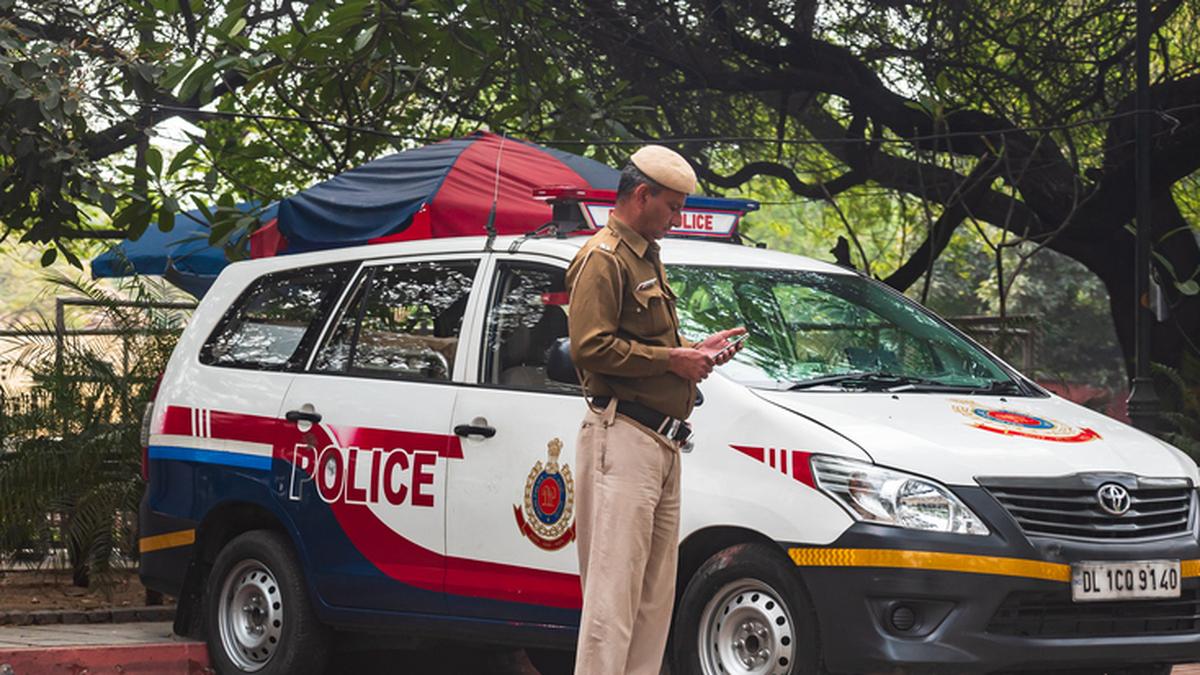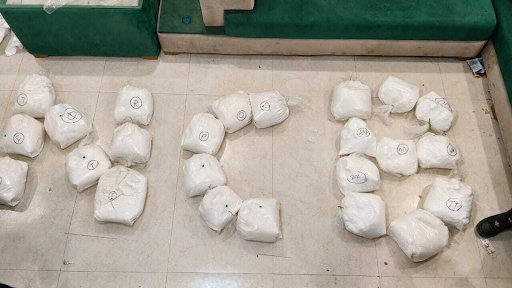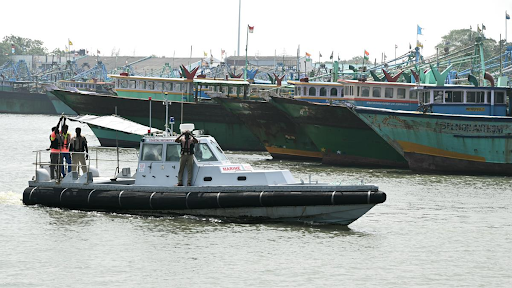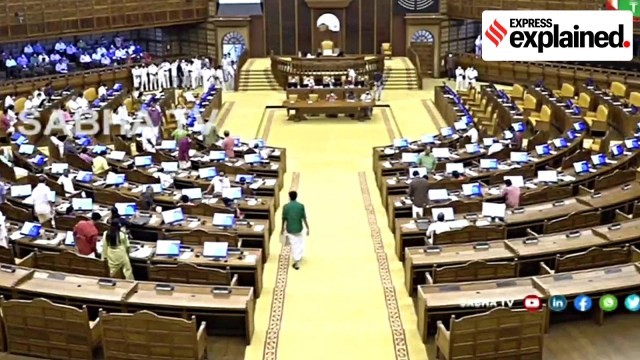Description

Disclaimer: Copyright infringement not intended.
Context
- Since 2022, data is maintained separately for a number of incidents perpetrated by Left Wing Extremists and incidents initiated by Security Forces. This was stated by the Minister of State for Home Affairs, in Rajya Sabha.
The origin of Naxalism
- The birth of Naxalism is pinpointed to the Naxalbari uprising of spring 1967. Naxalbari, the village that gave its name to the movement, was the site of a peasant revolt, instigated by communist leaders against land owners of the State.
- The Naxals are considered far-left radical communists, supportive of Maoist political sentiment and ideology.
- Their origin can be traced to the split in 1967 of the Communist Party of India (Marxist), leading to the formation of the Communist Party of India (Marxist–Leninist).
- Initially, the movement had its center in West Bengal. In later years, it spread into less developed areas of rural southern and eastern India, such as Chhattisgarh, Odisha, and Andhra Pradesh through the activities of underground groups like the Communist Party of India (Maoist).
- Naxal, Naxalite and Naksalvadi are generic terms used to refer to various militant Communist groups operating in different parts of India under different organizational envelopes. In the eastern states of mainland India (Chhattisgarh, Jharkhand, West Bengal, and Odisha), they are usually known as, or refer to themselves as Maoists while in southern states like Andhra Pradesh, they are known under other titles. They have been declared a terrorist organization under the Unlawful Activities (Prevention) Act of India (1967).

Causes of the Naxalite Movement
- The main reason for the beginning of this movement was the lack of human development and the resentment amongst the people. The people have felt alienated and excluded.
- In addition to this fact, people were exploited by the local elites of the areas that resulted in torture of the poor tribals.
- The people who belong to the Naxal groups have received most of their support from the tribals living in the areas, i.e., the Dalits and the Adivasis. The reasons for their support are manifold. What is common amongst these groups is the degree of unemployment and qualification.
- The recent forest policies made by the government which has restricted their livelihood, the cultural humiliation they face, not being able to access good healthcare, education, and power, the atrocities they face on a daily basis, the political marginalization and the protests that they do, can also be included in this.
- The states that have surfaced as the hotpots for the Naxalites have a substantially high record of the crimes that have been committed against the neglected groups that include the Dalits and the Adivasis.
- It has also been shown that a large number of neglected groups were not given opportunities in Government Services. The attempts made by the government to increase its influence in the backward areas have resulted in the repression of the inhabitants. The authorities of the state such as the forest officers have subsequently disrupted their social bond.
- The most Naxal-affected states are Jharkhand, Chhattisgarh, Bihar, Andhra Pradesh, and Madhya Pradesh. Each of these states are rich in natural resources. Such an abundance of natural resources has been one of the reasons for the promotion of the Naxal movement in these states.
- The very slow implementation of the reforms related to the land could be one of the major reasons. The landlords, who have generally been termed to be corrupt, have frequently moved to the courts to get these reforms delayed. They are also known to have connived with the local politicians to make the land reforms process slow and cumbersome. The reforms related to the land have thus failed to come into play.
- The second reason is the social structure of the areas where the Naxal activities are prevalent. Most of the problem arises in areas where there are poor people as the residents who have absolutely no or minimal resources to meet their ends.
- Despite having an abundance of schemes, people living in these areas are affected because of the lack of proper implementation of these schemes.
- Lack of political will of different State governments is yet another reason for persistent naxal interference. It is observed that governments come and go yet the issue persists, other than blaming and claiming that the present government has outperformed the previous governments in curbing Naxalism in India, there haven’t been many instances of proactive steps being taken to tackle this situation once and for all.
- A major side-effect of adopting a long-term solution plan rather than short-term solutions is that the Naxalite fragments get enough time to consolidate their plans, organize their hold more strategically and discover more stealthy locations and pockets for escape.
Government’s Policy
- The Government has used various sustainable strategies towards the Maoist insurgency. The main building blocks for India’s anti-Maoist response were laid down by the United Progressive Alliance (UPA) and the National Democratic Alliance (NDA) government between 2004-2014.
- The principal strategy used by the government is the ‘Law and Order Approach’. This can be established by the fact that around 532 companies of central paramilitary forces have been deployed in the affected states. The Ministry of Home Affairs has set up a special ‘institutional mechanism’ for counter-insurgency (COIN) tactics. It consists of vi
-
- A high-level task force named the ‘Review Committee’ under the Cabinet Secretary for promoting coordinated efforts for development and security measures.
- An Inter-Ministerial Group under the Ministry of Home Affairs headed by Secretary, Naxal Management Division – to review the implementation of development programmes in the Naxalite-affected areas.
- A Task Force on inter-State coordination headed by Special Secretary, Internal Security.
- A coordination Centre headed by Union Home Secretary.
- Broadly, there are 4 key elements in the Union government’s approach to dealing with the Maoists/Naxalites.
- These are Security, Public Perception Management, Development, and rehabilitation.
But let’s dive deeper into the policy guidelines used by the government and analyze them under different sub-headings.
- Intelligence and Networking- The government has set up Multi-Agency Centre (MAC) at the Central level and State Multi-Agency Centre (SMAC) at the state level. These centres have proved to be highly effective in Maoist hotbeds like Jagdalpur and Gaya. Other noteworthy stops include strengthening of State-Intelligence Bureaus(SIBs) in the LWE affected areas.
- Deployment of Central Paramilitary Forces– The creation of Central Armed Police Forces(CAPF) to carry out counterinsurgency strategies has been a significant factor to improve the condition. More than 70,000 CAPFs have been deployed in the Naxal-affected states. In addition, the Centre has helped states to raise 14 Specialized Commando Battalion (CoBRA) that are equipped and trained in guerrilla and jungle warfare techniques and deployed to the worst-affected districts.
- SAMADHAN- The NDA government led by Prime Minister Narendra Modi, launched ‘SAMADHAN’ in May 2017. The acronym stands for the following: S – Smart Leadership, A – Aggressive Strategy, M – Motivation and Training, A – Actionable Intelligence, D -Dashboard Based KPIs (Key Performance Indicators), and KRAs (Key Result Areas), H- Harnessing Technology, A – Action plan for each theatre and N- No access to Financing. This policy aims to hit at critical junctures in the Maoist links.
- Infrastructure Schemes- This scheme provides funds for better mobility, weaponry, vehicles and other critical infrastructure. Under the scheme, some 250 fortified police stations were opened in the LWE-affected states. In December 2016, the Union government approved road-connectivity projects in 44 of the worst affected districts allocating a sum of INR 14025 crores.x
- Ban on the CPI(Maoist) and the UAPA Act, 2009- The Central Government in 2009 put a countrywide ban on the CPI(Maoist). Apart from this, the government enacted the Unlawful Activities Prevention Act, 2009 to put a check on the activities of the Naxalites and provide police and paramilitary forces autonomy and increased powers.
These were few of the indicators which define the government’s approach in the naxal-affected states. Due to the varied demography and nature of the Maoist and Naxals, ‘One tactic fits all’ would turn out to be a disaster. This is the reason why the government is moving ahead with not just the ‘Law and Order Approach’ but also the ‘Development and Rehabilitation Approach’ which has proved to be equally effective.
Laws made to tackle Naxalism
There have been a few laws made by the government that are intended to curb Naxalism. These are:
National Rehabilitation and Resettlement Policy, 2007
- The main function of this Act was to reduce the displacement of the people of these affected areas as well as to provide good alternatives for the dispersal of the people.
- The government had made this policy for the people whose land is acquired by the government for industrial growth.
- Under the said policy, in exchange for land, an employment opportunity shall be given to at least one member of the family along with vocational training and housing facilities.
Forest Rights Acts, 2006
- This Act has acknowledged the rights of the forest dwellers and the scheduled tribes who have been living in the forest areas but their rights have not been recognised.
Chhattisgarh Special Public Securities Act, 2006
- This act has provided for the definition of the unlawful activities that have been prevalent in these areas and have also declared certain organizations as unlawful.
- This act gives the government the power to form an advisory board, wherever the state government feels that it needs to be established. It also states its procedures, formation of such a board and penalties with punishments.
- Even for not committing a crime, the power to notify the place that is being used for an unlawful purpose, whilst taking note of the place and bar/revision against the intervention of the courts lies with the government.
The Chhattisgarh Special Public Securities Bill of 2005
- It provides for the fact that the District Magistrate of any district has an unconditional power to notify those places he thinks are being used as places for unlawful activities without any notification that has to be stated priorly.
- There is no requirement such as the production of the evidence in such a case to prove that the place which the District Magistrate has marked unlawful, actually conducts these unlawful activities.
- This bill has provided that any revision petition against the order of the government and the District Magistrate can only be filed at the High Court. Also, this petition has to be filed within 30 days and no court has jurisdiction against the order of the decision made by the High Court.
- Any sort of revision petition or the application or any form of injunction by a court or the officer except for the High Court or the Supreme Court related to any action that has to be taken, has been completely barred in this Bill.
Are these laws effective?
- These laws have caused a lot of problems for the people who belong to the scheduled tribes and the scheduled castes.
- The Acts that provide a “land for a land” has turned out to be nothing but a nightmare for the people as well as the government and has also blocked the industrialisation in the Naxal areas.
What reforms are needed?
- The complex causes of the problem related to the Naxals as well as their implications for both external as well as internal security reasons reflect a multidimensional solution. This calls for collaboration between the center as well as the states.
- In order to completely eradicate the threat of the Naxals, the government has to ensure that they dig deep into their root causes and address the issues. This problem now calls for a three-parted solution. These are:
Socio-Economic Development
- The Naxalites are fueled by the discontent by the governmental bodies, therefore it is important to address these issues.
- When the national budget is being made, the first priority is to be given to these poor regions through initiatives regarding the health and safety provisions whilst providing them with social reforms as well as educational developments.
- The service delivery of the government must be improved in these areas.
- The regulations of providing minimum wages and other basic needs must be implemented. If these issues are addressed, then there will be no discontent on behalf of the Naxalites.
Multilateral Dialogue
- The government should initiate proper dialogues with these groups that have been marginalized, the Naxalites and the local leaders of the areas.
- Communication is the key to the feeling of being heard. The only reason why these groups supported the Naxalites was because the government has been unaware and indifferent to their claims.
- Through communication, their views will be taken into consideration and they would not need to resort to violence.
Military
- The main instrument that the government uses currently is the military force. This has increased the deployment of the military in Naxal areas. It has also reduced its territory to those areas where there could be potential threats instead of the Naxal areas.
- While some amount of military force is still needed to keep them under check, it should not be the only form that is required to combat the Naxalites. Coercion by the state will only provoke the groups to rebel even more.
Governance
- The growth of such a group also discloses the flaws in the structure of the government and the rules and regulations made by them.
- The government has the overall responsibility to address the threat and hence the states need to come together with the Union to combat the issues in a multidimensional way.
- Both organizations must support and complement each other’s strategies and ideas.
Conclusion
- The state must start to tackle issues legally and try to minimize the collateral damage that has been caused.
- They should strengthen the leader and the security as well as the peace-keeping forces.
- The security forces could be used to protect the local populace instead of merely targeting the Maoists.
- Until the governments implement the laws in these states, it will be very difficult to tackle such issues.

Closing Remarks
- Close examination of the movement will enable to understand that the marginalized take up arms only to break down the insensitive establishment, which has failed to deliver an egalitarian society.
- The Naxalite leaders may talk about 'deliverance of the proletariat from the neo-liberalist bourgeoisie, and the dawn of New Democracy', but such phrases mean little to the tribals and landless laborers who find themselves at the receiving end of state-sponsored and non-state-sponsored exploitation. They are in the battle only because of their disillusionment with the status quo.
- It is clear that there is a wide chasm between promises and their eventual deliverance. Until the government implements employment, poverty alleviation and land reform programs, counterinsurgency measures cannot achieve much.
- Social justice and inclusive growth are the planks on which the government must build its program.
- Only with consolidated efforts on the part of the legal and political framework socio-economic reforms can be implemented, and the problem of Naxalism tackled.
|
PRACTICE QUESTION
Q. The socio-economic perspective of Naxalism talks about how the rebel movement is shaped due to the failure of the institutional mechanisms and frameworks to deliver socio-economic justice. Comment.
|
https://pib.gov.in/PressReleasePage.aspx?PRID=1947129










